While many believe Dendrobium orchids are challenging to grow, you’ll find they’re actually quite adaptable when you understand their basic needs. You can start with a compact 6-inch variety that fits perfectly on your windowsill, or try one of the spectacular meter-tall specimens that command attention in any room. With over 1,500 species to choose from and care requirements that aren’t as demanding as you’d expect, there’s still so much to discover about these fascinating plants.
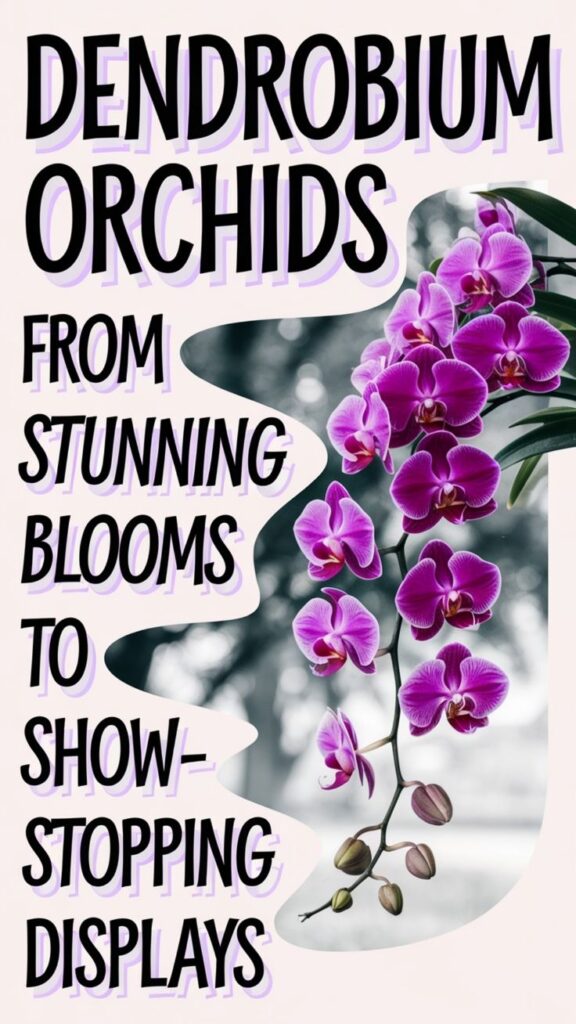
Contents
- 1 Understanding the Diverse World of Dendrobium Species
- 1.1 Dendrobium aggregatum
- 1.2 Dendrobium amethystoglossum
- 1.3 Dendrobium anosmum
- 1.4 Dendrobium antennatum
- 1.5 Dendrobium aphyllum
- 1.6 Dendrobium bigibbum
- 1.7 Dendrobium chrysotoxum
- 1.8 Dendrobium crumenatum
- 1.9 Dendrobium cuthbertsonii
- 1.10 Dendrobium farmeri
- 1.11 Dendrobium fimbriatum
- 1.12 Dendrobium kingianum
- 1.13 Dendrobium loddigesii
- 1.14 Dendrobium moniliforme
- 1.15 Dendrobium nobile
- 1.16 Dendrobium phalaenopsis
- 1.17 Dendrobium speciosum
- 1.18 Dendrobium thyrsiflorum
- 1.19 Dendrobium unicum
- 1.20 Dendrobium victoriae-reginae
- 2 Essential Growing Conditions for Healthy Dendrobiums
- 3 Seasonal Care and Maintenance Tips
- 4 Selecting the Perfect Dendrobium for Your Space
- 5 Propagation Methods and Techniques
- 6 Common Challenges and Solutions
- 7 Decorative Uses and Display Ideas
- 8 Best Companion Plants for Dendrobium Arrangements
Understanding the Diverse World of Dendrobium Species
When you first plunge into the world of Dendrobium orchids, you’ll discover there are over 1,500 distinct species in this diverse genus. These remarkable plants range from tiny specimens measuring just 2 centimeters to giants reaching up to 1 meter in height.
You’ll find Dendrobiums naturally distributed across Asia, Australia, and the Pacific Islands, adapting to various climates and elevations. Some species, like Dendrobium nobile, thrive in cool mountainous regions, while others, such as Dendrobium phalaenopsis, prefer tropical lowlands.
Each species showcases unique characteristics, from deciduous plants that shed leaves annually to evergreen varieties that maintain year-round foliage.
Dendrobium aggregatum

Also called the Yellow Dendrobium, it produces bright yellow flowers in dense clusters.
Dendrobium amethystoglossum

This species is admired for its clusters of lavender and purple flowers, native to the Philippines.
Dendrobium anosmum

Known as the unscented Dendrobium, this species produces large, fragrant flowers in shades of pink and purple.
Dendrobium antennatum

Known as the Green Antelope Orchid, it features unique green and white flowers with twisted petals.
Dendrobium aphyllum
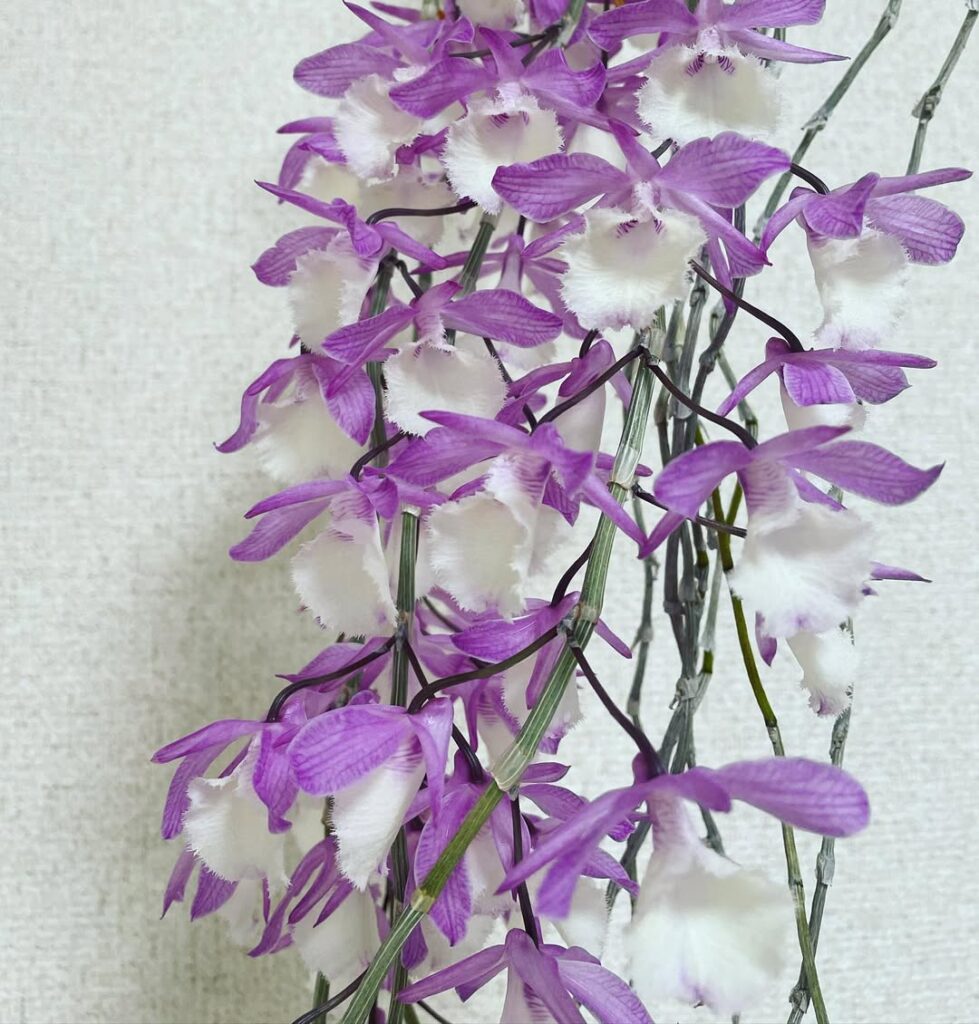
Also called the Hooded Orchid, it features delicate, pale flowers and thrives in tropical climates.
Dendrobium bigibbum
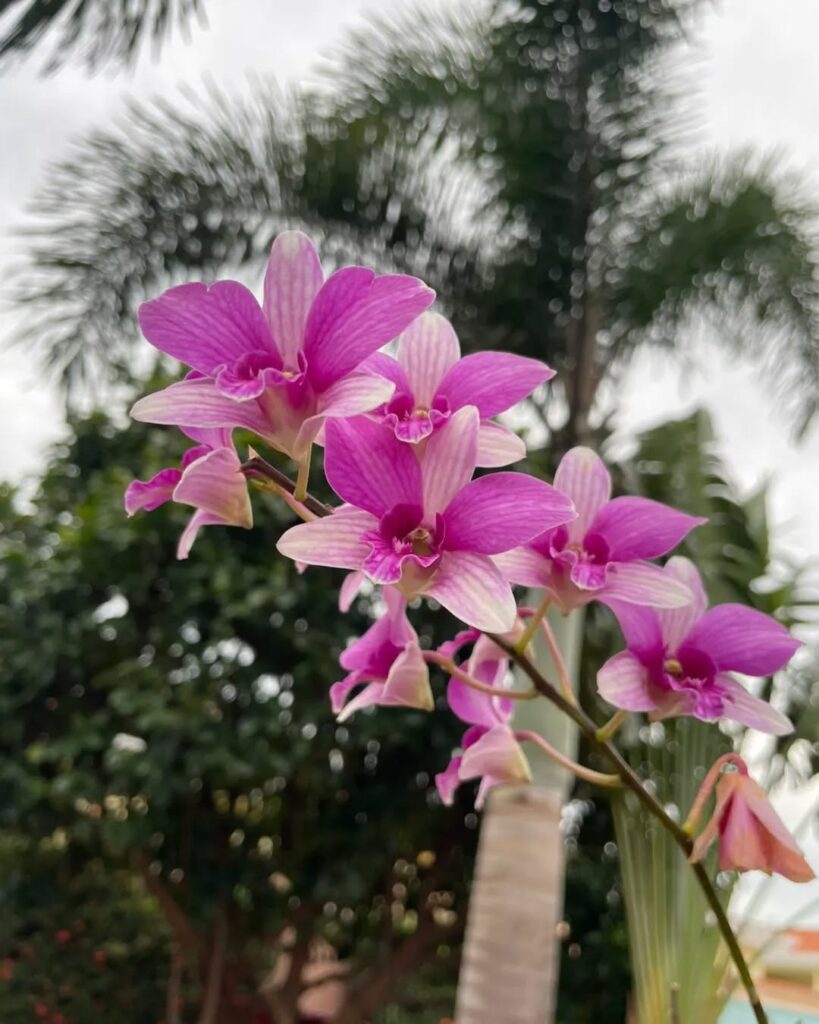
Also called the Cooktown Orchid, it is the floral emblem of Queensland, Australia, with vibrant purple blooms.
Dendrobium chrysotoxum
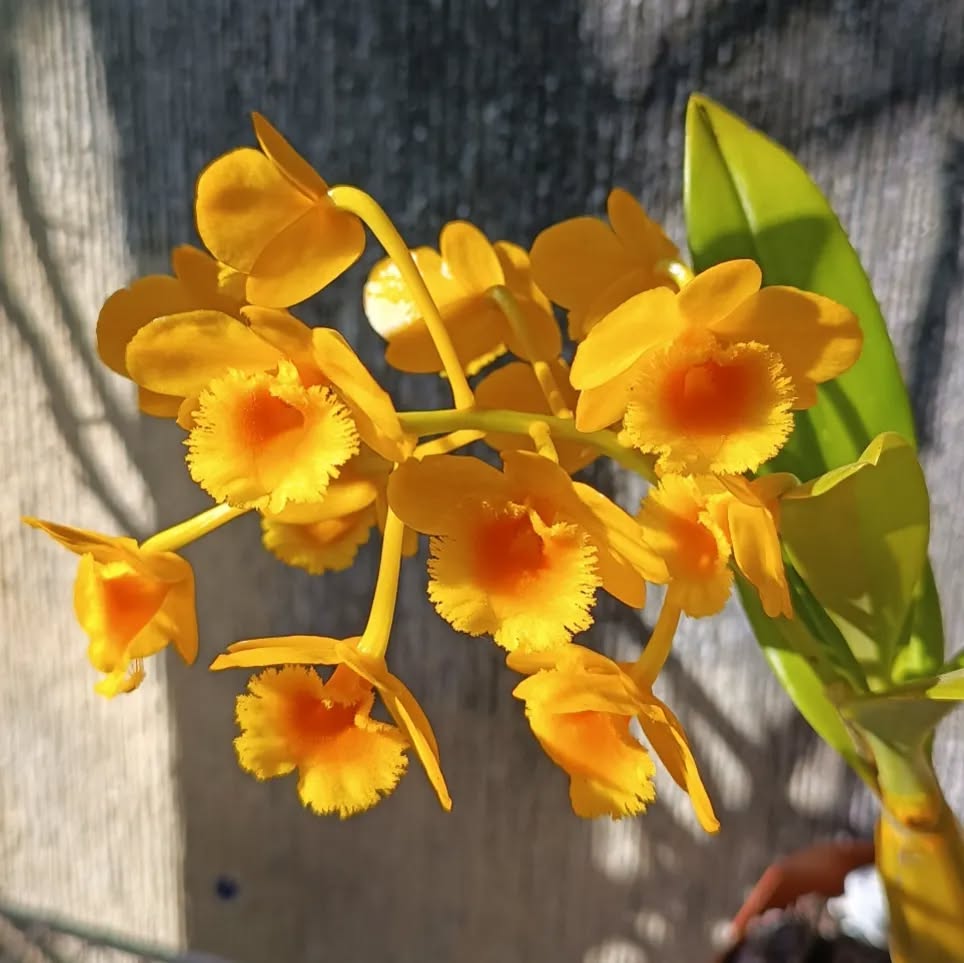
This species features golden-yellow flowers with a sweet fragrance, perfect for brightening up spaces.
Dendrobium crumenatum

Commonly known as the Pigeon Orchid, it produces fleeting white blooms with a sweet fragrance.
Dendrobium cuthbertsonii

A tiny species with bright red, pink, or orange flowers that last for months.
Dendrobium farmeri
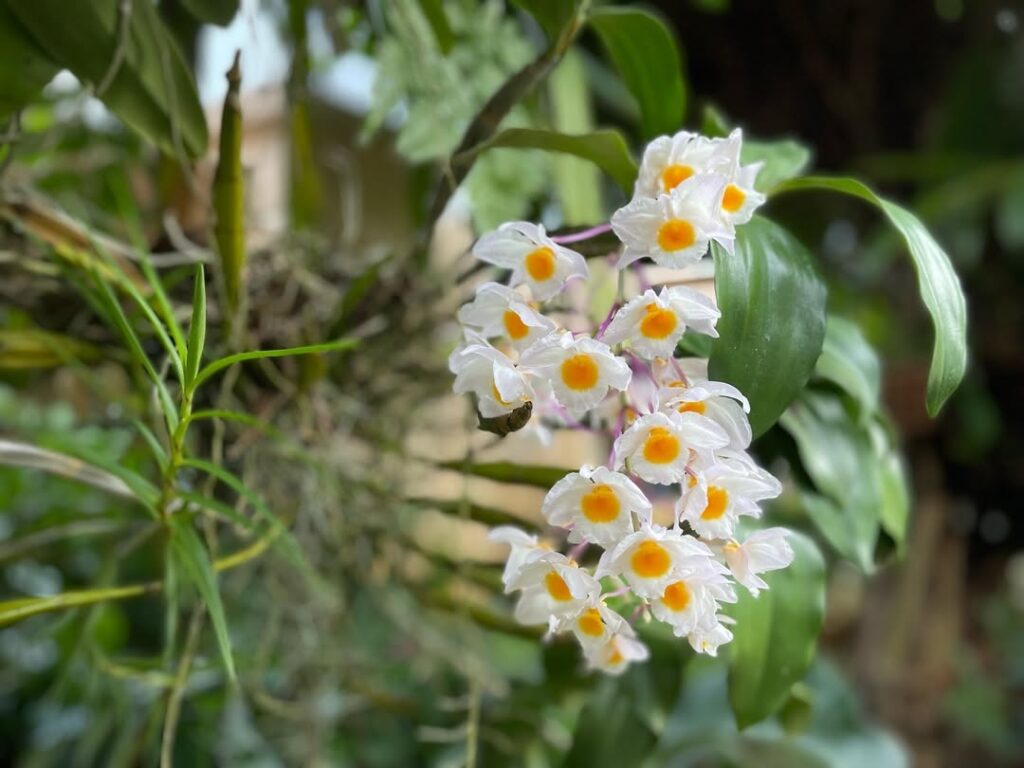
Known for its cascading sprays of pale pink and white flowers, it adds elegance to any collection.
Dendrobium fimbriatum
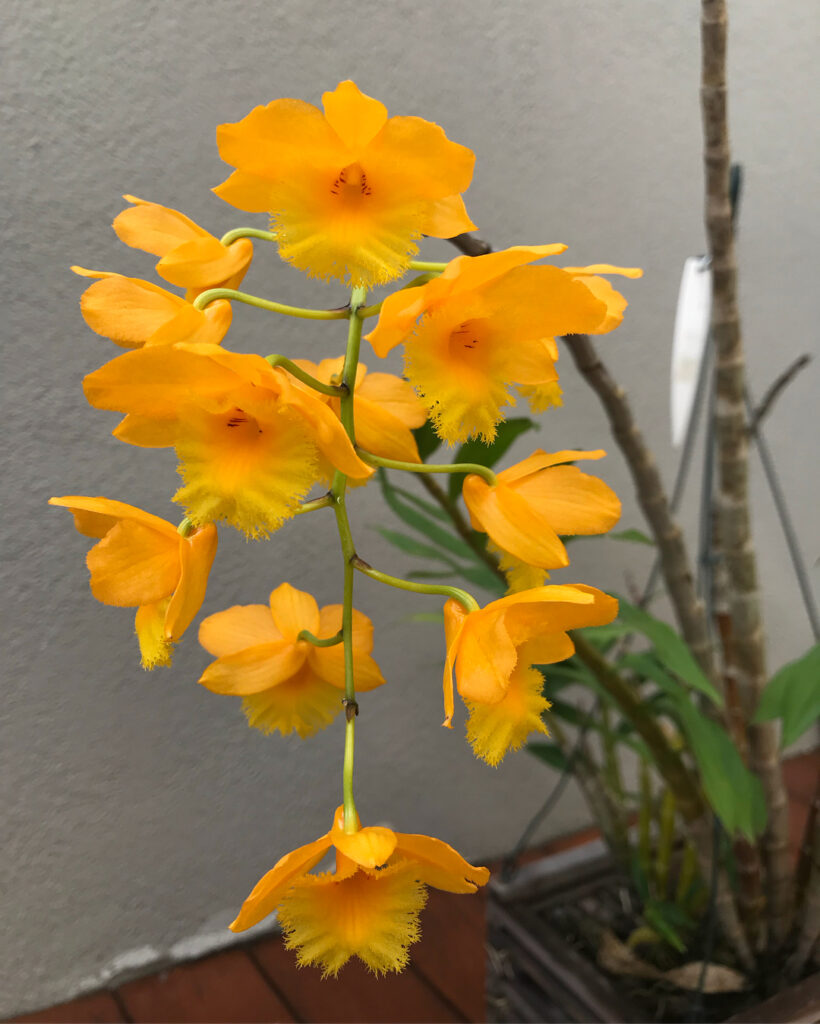
This species produces large, fringed yellow flowers with a striking orange lip.
Dendrobium kingianum

Also called the Pink Rock Orchid, it produces fragrant pink and white flowers and thrives in rocky areas.
Dendrobium loddigesii
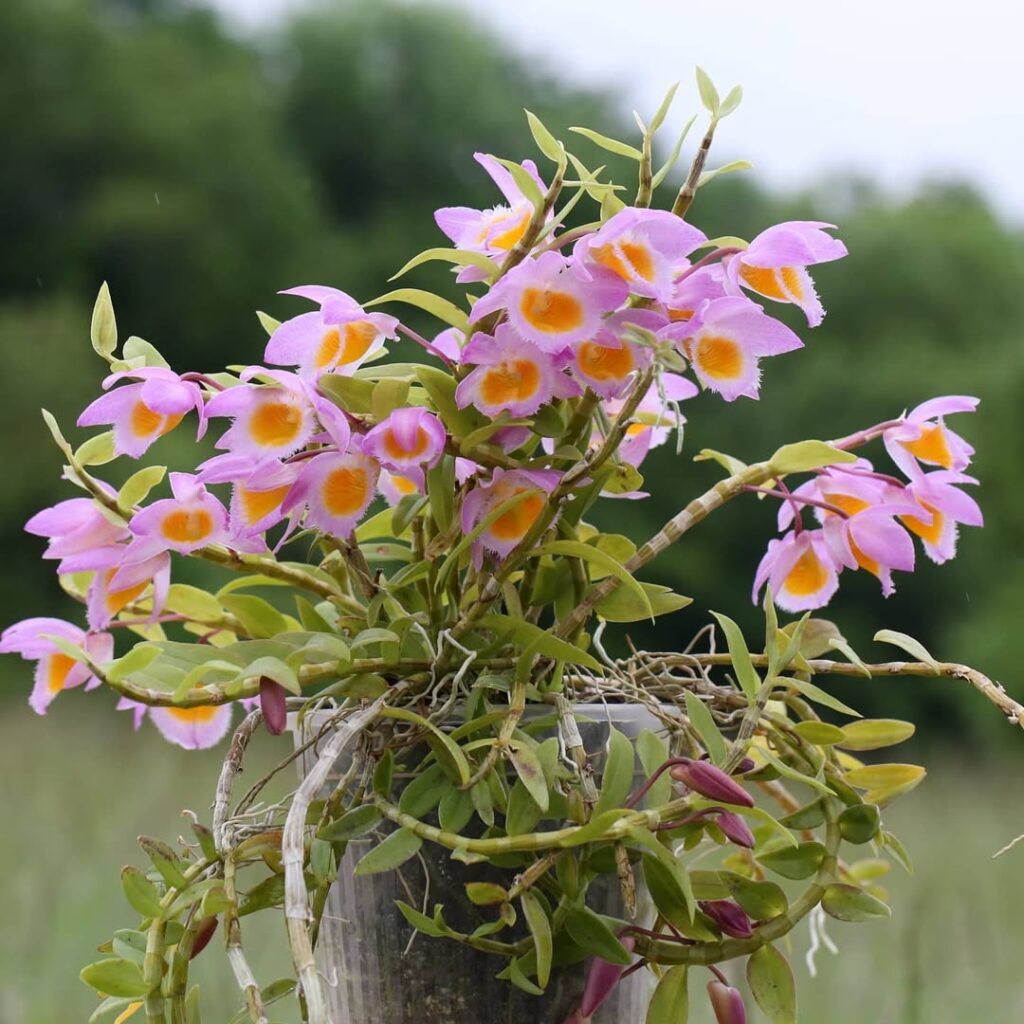
A charming species with soft pink flowers and a sweet fragrance, native to Southeast Asia.
Dendrobium moniliforme

A miniature species with delicate pink and white flowers, often used in Japanese floral arrangements.
Dendrobium nobile
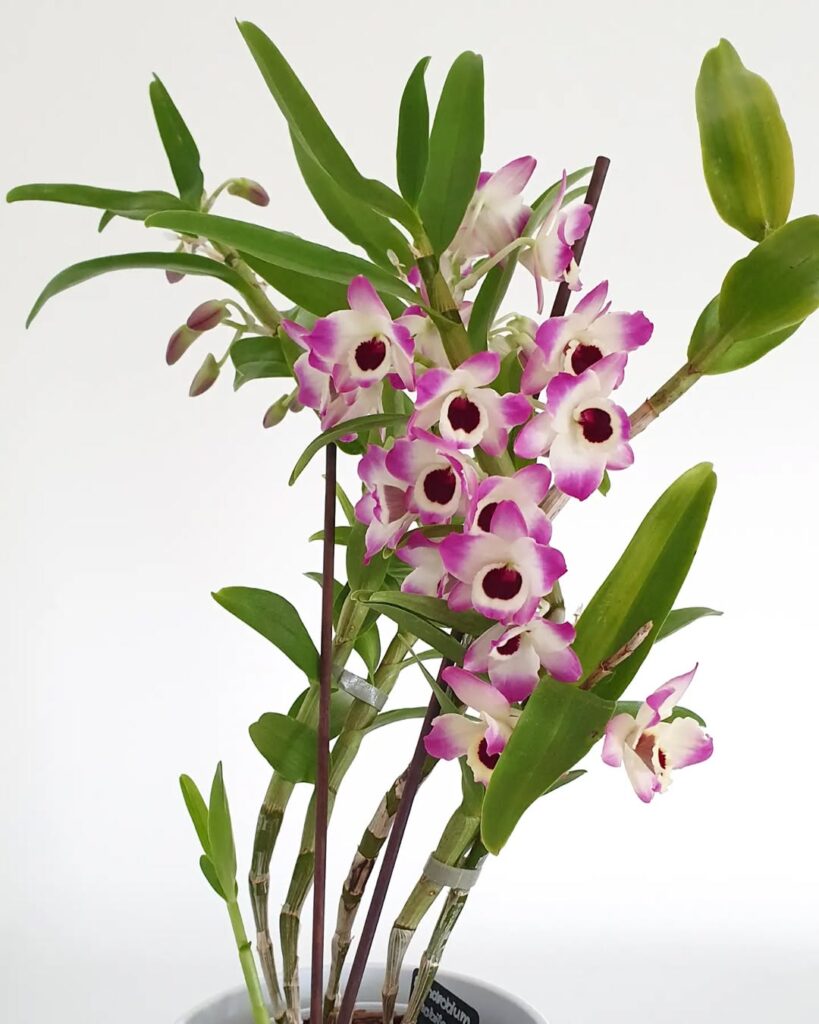
A popular species with clusters of vibrant flowers in shades of pink, purple, and white.
Dendrobium phalaenopsis

Known as the Phalaenopsis-type Dendrobium, it boasts large, colorful flowers resembling moth orchids.
Dendrobium speciosum
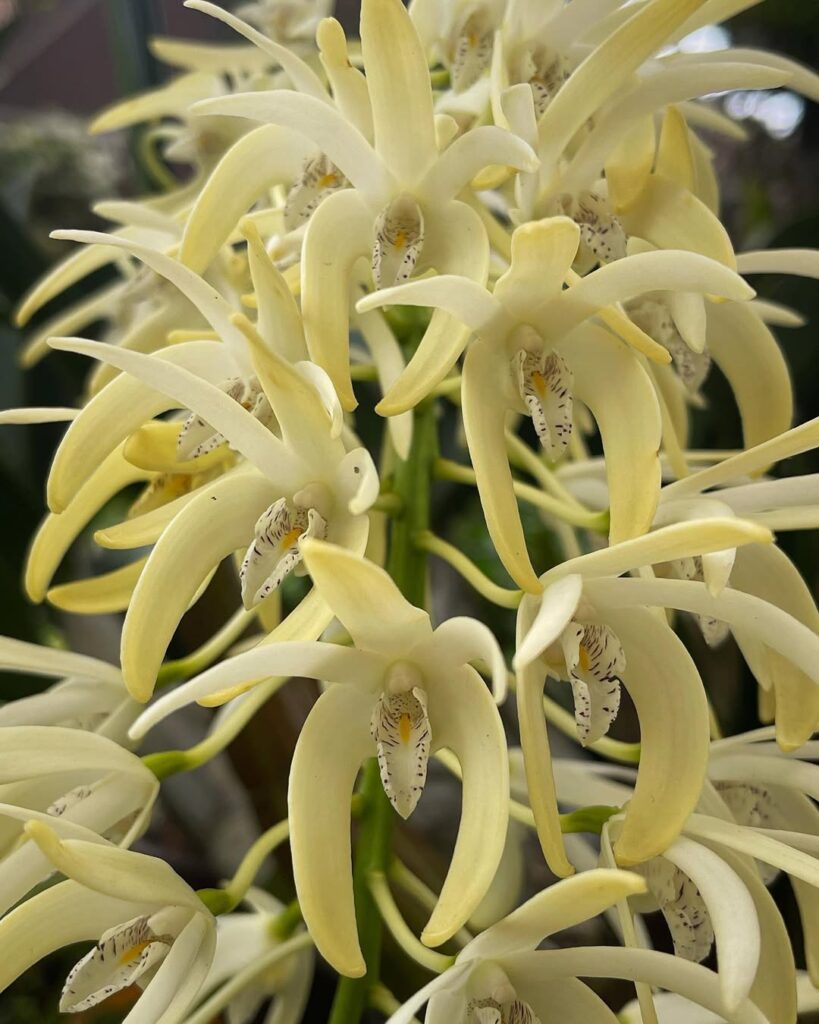
Also called the Rock Orchid, it produces creamy white flowers and thrives in rocky habitats.
Dendrobium thyrsiflorum
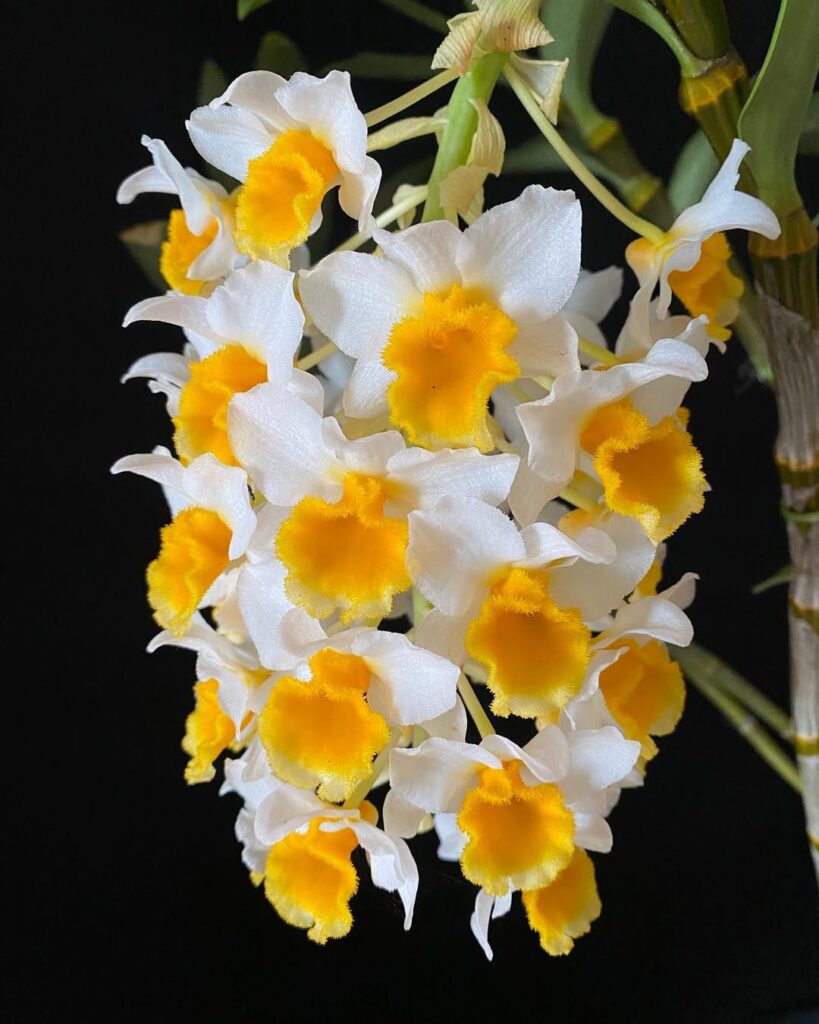
Known for its dense clusters of white and yellow flowers, it is a favorite among collectors.
Dendrobium unicum

A unique species with bright orange flowers and a compact growth habit.
Dendrobium victoriae-reginae
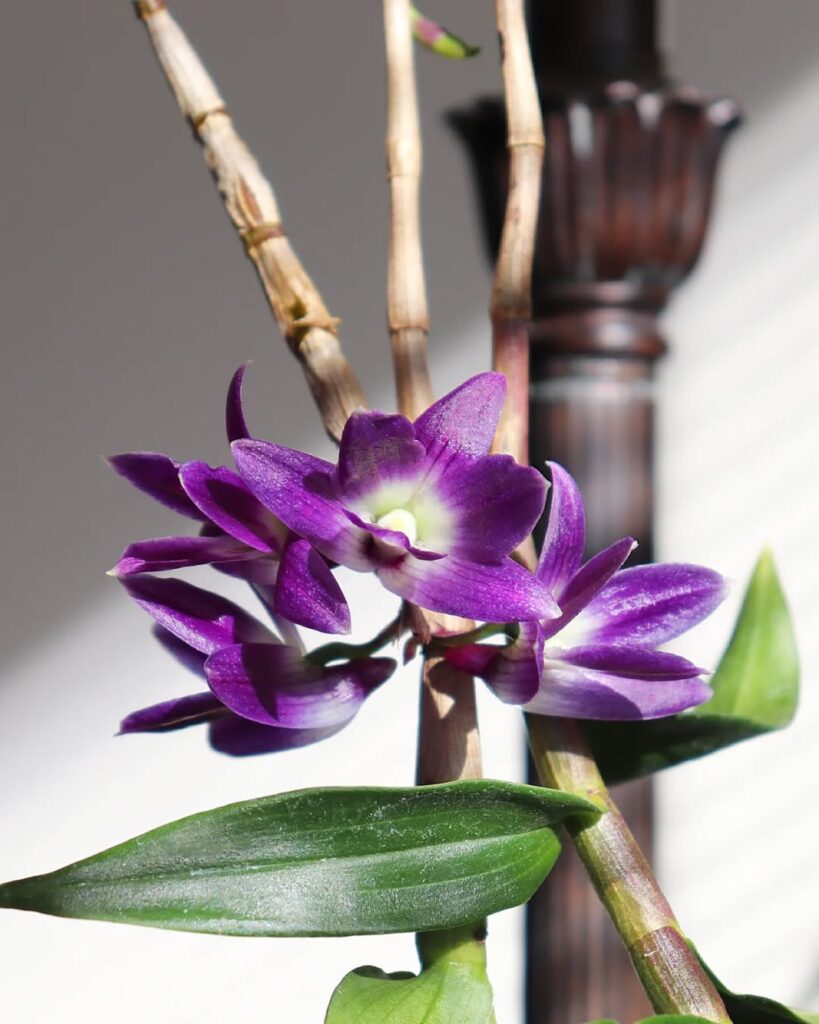
A striking species with vivid purple flowers, native to high-altitude regions.
Essential Growing Conditions for Healthy Dendrobiums
Since Dendrobium orchids originate from diverse natural habitats, they’ll need specific growing conditions to truly thrive in your care. Most varieties prefer temperatures between 65-85°F during the day and 55-65°F at night, with 50-70% humidity.
You’ll want to place your Dendrobiums in bright, indirect light, about 2-3 feet from an east or west-facing window. The growing medium should be well-draining, typically consisting of fir bark, perlite, and sphagnum moss.
Water thoroughly when the top inch of medium feels dry, usually every 5-7 days during growing season and less frequently during winter rest periods.
Seasonal Care and Maintenance Tips
To maintain thriving Dendrobium orchids year-round, you’ll need to adjust your care routine as seasons change.
Light and Temperature Requirements
Although Dendrobium orchids can adapt to various environments, they’ll thrive best with specific light and temperature conditions throughout the year. You’ll want to provide bright, indirect sunlight for 5-6 hours daily, placing them near east or west-facing windows while avoiding harsh afternoon rays.
During their growing season, maintain temperatures between 65-85°F (18-29°C) during the day and 60-65°F (15-18°C) at night. In winter, most Dendrobiums need a slight temperature drop to trigger blooming, so you should reduce nighttime temperatures to 55-60°F (13-15°C) for about 3-4 weeks.
If you’re growing them indoors, avoid placing them near heating vents or air conditioners.
Watering Schedule Adjustments
When your Dendrobium orchid’s watering needs change throughout the year, you’ll need to adjust your schedule accordingly. During active growth in spring and summer, water thoroughly once the top inch of media feels dry, typically every 5-7 days.
In fall, reduce watering frequency by about 30% as growth slows down. Winter requires the most significant adjustment – water only every 14-21 days, allowing the media to dry completely between waterings.
You’ll know it’s time to water when the pot feels noticeably lighter and the aerial roots turn silvery-gray. If you’re unsure, it’s better to underwater than overwater your Dendrobium.
Dormancy Period Success
Many Dendrobium orchids require a distinct dormancy period during winter months, typically lasting 8-12 weeks between November and February. During this time, you’ll need to reduce watering by 50% and maintain temperatures between 55-65°F (13-18°C).
To trigger dormancy, stop fertilizing and move your orchid to a cooler area with bright, indirect light. You’ll notice the leaves may yellow and drop – don’t panic, this is natural. Keep the humidity around 50% using a humidity tray or small humidifier.
Watch for new growth tips in late winter. When you spot them, gradually increase watering and resume normal care schedules, including weekly fertilizing at quarter-strength.
Selecting the Perfect Dendrobium for Your Space
Selecting the right Dendrobium orchid depends on your specific growing conditions and available space. Consider room temperature, humidity levels, and available light before making your choice.
For small spaces like windowsills, compact varieties like Den. kingianum or Den. loddigesii, which grow 8-12 inches tall, work perfectly. If you’ve got more room, try Den. nobile hybrids that can reach 24-36 inches.
Your light conditions matter too. If you’re dealing with low light, Den. phalaenopsis types will adapt well. For bright, indirect light, Den. speciosum thrives beautifully, though you’ll need to accommodate its robust 3-foot spread.
Propagation Methods and Techniques
Although Dendrobium orchids can seem challenging to propagate, you’ll find several reliable methods to multiply your collection. The most common technique is division, where you’ll separate mature plants with at least 4-5 healthy canes during repotting.
Keiki propagation offers another effective method. These baby plants form naturally on the mother plant’s stems, and you can remove them once they develop 2-3 roots that are 2-3 inches long. Simply cut the keiki 1 inch below its roots.
Back bulb propagation works well too. Cut old canes into 4-inch sections, each containing at least one node, and lay them in moist sphagnum moss until new growth emerges.
Common Challenges and Solutions
When growing Dendrobium orchids, you’ll face two main types of challenges: disease/pest issues and environmental control problems.
Disease and Pest Control
Despite their resilient nature, Dendrobium orchids face several common disease and pest challenges that can threaten their health.
To combat fungal infections like black rot and leaf spot, you’ll need to immediately remove affected parts and apply a copper-based fungicide. Spider mites, mealybugs, and scale insects often attack during dry conditions, requiring treatment with neem oil or insecticidal soap every 7-10 days.
Root rot typically develops from overwatering, so inspect roots monthly and trim any black, mushy sections. For virus prevention, always sterilize your cutting tools with 70% isopropyl alcohol between plants, and isolate any suspicious-looking orchids for 14 days.
Light and Water Issues
Many Dendrobium orchid problems stem from improper light and water management, ranking just as high as pest and disease concerns. You’ll notice leaves yellowing or becoming leathery when light levels aren’t right, while incorrect watering leads to root rot or dehydration.
To avoid light issues, place your orchid 3-4 feet from an east-facing window, using sheer curtains to filter intense sunlight. Watch for dark green leaves, which signal insufficient light, or reddish leaves indicating too much exposure.
For watering, you’ll want to maintain slightly moist media during growing season. Check moisture by inserting your finger 1 inch deep – if it’s dry, it’s time to water.
Decorative Uses and Display Ideas
Because Dendrobium orchids produce long-lasting, showy blooms, they’re perfect for both formal and casual decorative displays. You’ll find they work beautifully as centerpieces when placed in clear glass vases, with stems reaching 12-18 inches high.
For maximum impact, try clustering three plants of varying heights on a windowsill or shelf, spacing them 6 inches apart. If you’re decorating for events, you can incorporate them into table arrangements or create stunning bridal bouquets.
Consider mounting your Dendrobiums on decorative bark or in hanging baskets near east-facing windows. They’ll create an eye-catching display while receiving the filtered morning light they need to thrive.
Best Companion Plants for Dendrobium Arrangements
When pairing plants with your Dendrobium orchids, selecting complementary species that share similar light and humidity requirements will create the most successful arrangements.
Consider incorporating ferns like Bird’s Nest or Boston varieties, which thrive in similar conditions and provide delicate textural contrast. Bromeliads, particularly Guzmania and Vriesea species, offer striking color combinations while maintaining harmony in care needs.
For height variation, try pairing your Dendrobiums with upright Dracaena marginata or bamboo plants. Peace lilies make excellent ground-level companions, filling empty spaces with their glossy leaves and occasional white blooms. You’ll also find that small-leafed Peperomia varieties work well as intermediate plants.
